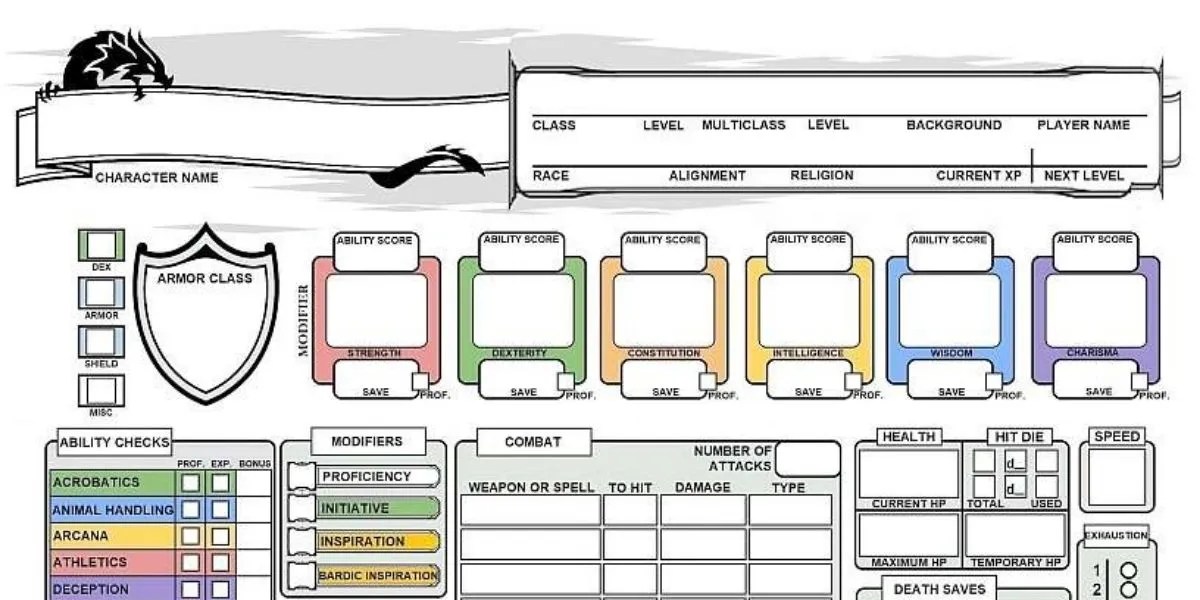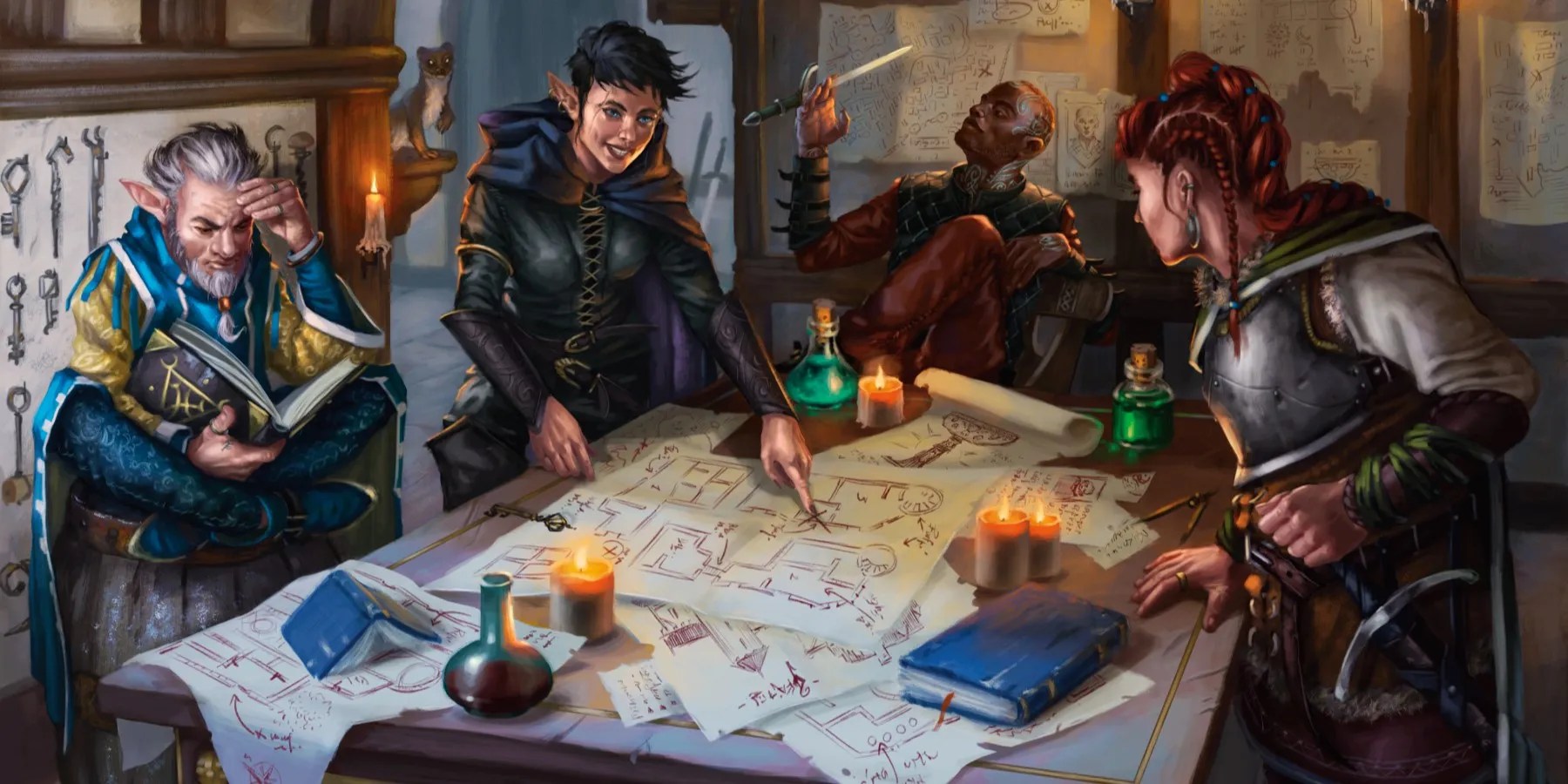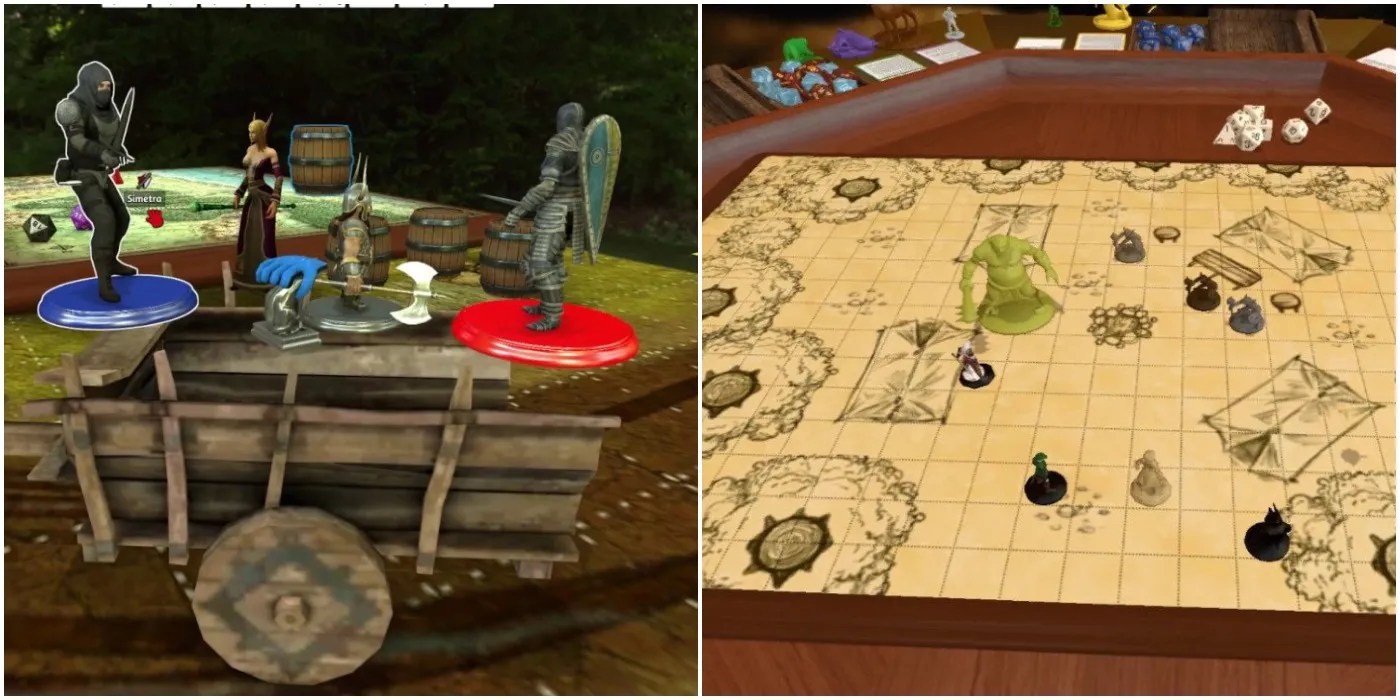The “table-top” part of TTRPG is becoming more of an expression. Many of these games are now played remotely, with players taking advantage of the power of the internet to bring their games online. Wizards of the Coast caught on to this trend early, and as a result, there’s a variety ofDungeons & Dragonsmaterials available in digital form.
RELATED:Dungeons And Dragons: All Warlock Patrons, Ranked

These aren’t just PDF files that anyone can download and either use on their tablet or computer but also the kinds of programs or applications that are essential to the gaming process. Now that so many games take place online, having access to these resources is even more important. Players can also use these versatile supplies on their tablets, laptops, or phones instead of printing them as hard copies.
6Character Sheets
The basic building block of allD&Dlife, every kind of character sheet that a player could want is available in digital form.Most players are only familiarwith the basic 5th edition character creation sheet, of which many variations exist depending on the source, but there are several useful variations on this basic design also available.
Specific modules might require variations on the regular character creation sheet, which includes the option of pre-generated characters for more advanced modules and encounters. Most of the time if a payer has the digital version of an adventuring module the character creation sheet for that adventure is also included if it’s different from the usual one.

5Basic Rules
The nicest thing about digital versions is that they’re usually up to date, and in the modern world of TTRPGs, details like rules and regulations can change very quickly. Instead of updating or storing hard copies of these documents, and the pile can get extensive, just use digital versions instead. Digital copies also give players an edge when it comes to searching for information in a document, which is easier and faster than flipping through a real book.
RELATED:Strongest D&D Villains, Ranked
The Basic Rulesis an otherwise big and expensive book that consists of more than 130 pages, and this is essential beginner material that everyone needs to play the game. It includes guides on everything from character creation to the rules of gameplay and combatand even a section for Dungeon Masters.
4Dice Rolling
Having a personal set of dice is one of the fun perks of being a TTRPG player, and many buy them just for the aesthetic or as an accessory. The reality is that digital dice travel better, are easier to use,and are just as accurate. If it’s an online game, the dice are likely to be digital anyway, unless the DM has a lot of trust in the party not to fudge the numbers.
It’s easy to find an app that just rolls dice, so make sure to find the right dice for the right game or adventure. A 20-sided die isn’t enough, and there are plenty of apps that will also include modifiers and bonuses, so DMs no longer have to run the numbers manually either.

3Encounters
These can be anything from single fights to full-length adventure modules that take characters through several levels. There are all kinds available online, and although some of them are intended to be downloaded and printed, they still work just as well in digital form.
RELATED:Greatest D&D Campaign Settings, Ranked
It’s hard to choose which encounters would be considered essential since that depends on the DM or the party involved.D&D Beyondhas an Encounter of the Week section when players need direction or inspiration. These are available on the website and are intended to be used digitally anyway.
2Map & Landscape Generators
Drawing out maps is one of the most important parts of organizing a campaign. Not only are maps of the countryside and cities required but also detailed plans of any interior spaces like dungeons or castles that the party might be exploring.
Being able to draw and create these kinds of accessories in digital form is a great advantage. It saves a lot of time andallows the DM some more leveragewhen it comes to creativity and when needed, sometimes a few corrections. These can be kept under lock and key by the DM should it be necessary to keep the information a secret, but it’s just as easy to share the map remotely with everyone no matter what device they’re using. For those playing remotely, it’s an essential component of the game.

1The Virtual Tabletop
A virtual map or landscape generator is often used with a virtual tabletop, and many of themare designed to be used together. With the current rise in AI technology, these kinds of programs are getting more sophisticated and can also be used to make detailed interiors that include accessories and furniture. Use them to recreate locations fromD&Dadventure modules or create completely new ones for homebrew ideas.
For those who prefer the simple grid layout, and for those that want their creations to be available on a variety of devices, there’sDonjonwhich uses a black and white color scheme and a bird’s eye view for simplicity. On the other end of this spectrum are programs likeInkarnate, which can be used to create a whole planet, andDungeon Alchemist, which uses AI to generate 3D visions of exterior and interior spaces.

MORE:Dungeons and Dragons: Best Feats For Wizards
